Bus bunching is a scenario when two or more buses along the same bus route arrive together (or a short distance from each other), instead of being evenly spaced apart. In such an instance, at least one of the buses has deviated off their scheduled timetable by a large margin.
Bunching occurs as one or more vehicle is unable to keep to their schedule, and as a result, passengers along the route experience longer waiting times. Often, bunching results in an overcrowded front bus followed by a rear bus with substantially lower passenger loading.
Classic Scenario
Under normal operating conditions, buses maintain their designated headway between each other. However, this is not the case with actual bus operations, with many factors affecting road conditions such as adverse traffic conditions and uneven passenger demand. Here, we borrow an example from SBS Transit’s website explaining bus bunching. Let us visualise a scenario where three buses are running in 10-minute intervals and demand along the route is constant:

Bus 1 did not meet any problems and hence, was able to keep to the schedule. Bus 2 encountered heavy traffic while Bus 3 did not encounter any problems. Hence, the time between Bus 1 and Bus 2 was lengthened, while the time between Bus 2 and Bus 3 was shortened (see below).

By taking more than its share of passengers Bus 2 slowed down as a result, while Bus 3 picked up fewer passengers which caused it to speed up. As this continues, Bus 2 would eventually bunch up with Bus 3. To a passenger waiting for Bus 2, he would have waited for 15min, and it would seem that Bus 2 was crowded while Bus 3 was relatively empty.
Usually, bus services with longer route length, longer run times, a higher number of intermediate stops and shorter headway are more prone to bunching. SMRT Service 190 is probably the best-known example of frequent bunching, owing to high passenger demand and short headway of five minutes or less. SBS Transit’s Service 65 also experiences frequent bunching across its long route length, high demand and plenty of en route stops.
Implications
Bus bunching is the primary cause of reliability problems experienced by bus services and often bear the brunt of passenger complaints. For passengers in Bus 2, their journey time will increase as their bus falls behind its normal schedule, undesirable for most passengers. Bus 3 may even overtake Bus 2, but due to the nature of fixed schedules, Bus 3 will be pressured to slow down in adherence to its original schedule. With Bus 2 already burdened with additional passengers, the bunching of the two buses is not likely to be resolved easily.
For the driver of Bus 2, the additional delay in his schedule would result in a shorter break time before his next trip, even if the bus bunching event was out of his control. In some cases, drivers forgo their layover break or even their meal break just to depart for their subsequent trip on time. Even in severe delays which can stretch up to over an hour, drivers do not get paid more for working longer hours, as their pay hours are dictated by the timetable.
For the driver of Bus 3, he would not be able to overtake Bus 2 for long, even if doing so would lessen the demand on Bus 2 and speed up both their journeys. The driver is confined to his timetable which he has to adhere to, or else it will result in heavier loading on the subsequent bus (“Bus 4”) , and may even cause a second bunch-up with Bus 4 and Bus 5. Recently (in 2013), bus operators have increased financial penalties for bus drivers who arrive at the terminus earlier than the time stipulated on the timetable, increasing pressure on drivers to keep to schedule.
The Bus Service Reliability Framework introduced in 2014 aims to cut instances of bus bunching. Using the Excess Wait Time (EWT) indicator, bus operators are provided with monetary incentives to minimise instances of irregular and prolonged waiting times, and face financial penalties for underperformance. More information in the dedicated article.
Gallery:
Back to Bus Articles
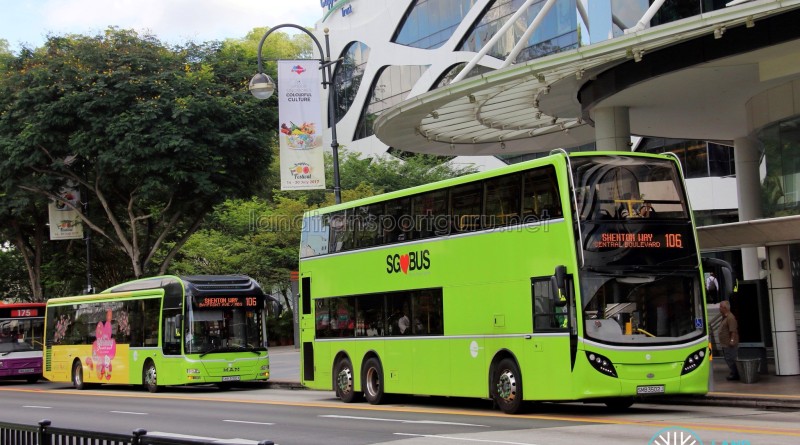

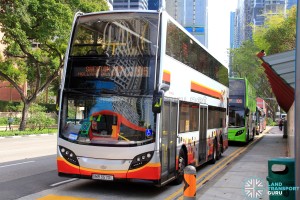

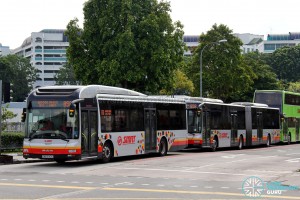
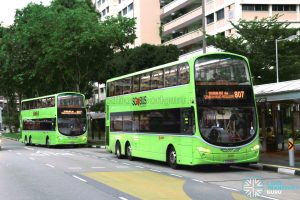
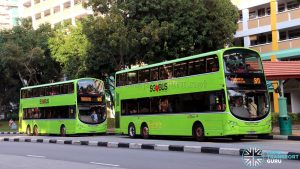
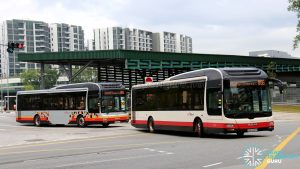

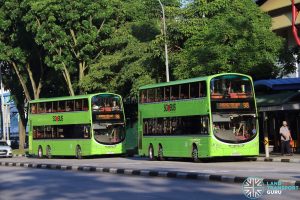

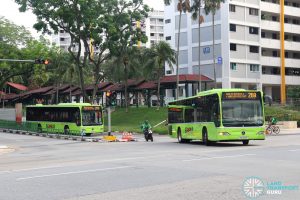

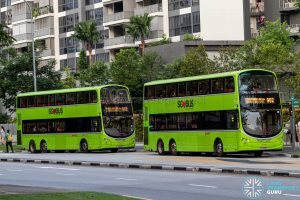
I also saw Bus 62 bunching a lot of times…
If a main bus service arrives with another service (sub-service) is that bus bunching?
No. As a short trip service is derived from its parent service